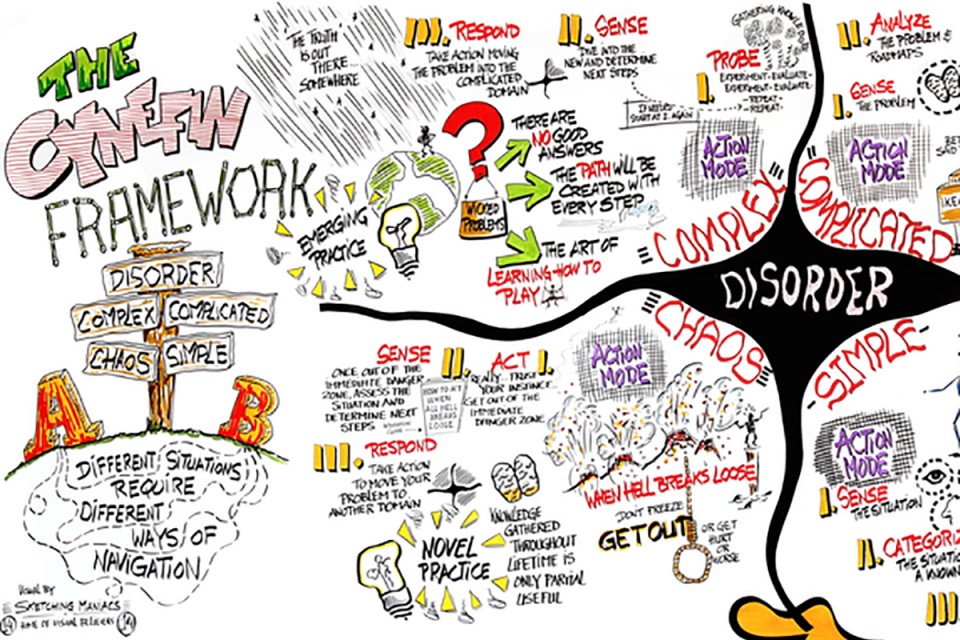Session 9: April 11
Discerning an appropriate approach
Introducing the Cynefin framework for discerning complexity
Not all situations exhibit the kind of complexity that most of this course is discussing. Sometimes you can simply know what to do, and go do it. Sometimes you can draw on expertise or research, or feel confident that a good solution can be recognized when it shows up, and an iterative design process will get you to it. And sometimes the situation has true social complexity, such that those familiar approaches are doomed to fail at best, or cause harm at worst.
So let’s learn to be discerning, and to help a group of people be discerning together. The Cynefin framework provides a tool for such work. We’ll introduce the framework, and learn about the approach it recommends for managing in truly complex situations.
Cynefin is useful on its own to help us see, but it is most useful in managing our efforts when paired with facilitation methods that help a group of people sort complicated issues from the truly complex. And to then attempt to shift those complex situations, we will discuss an approach involving a portfolio of “safe to fail” probes — experiments in setting the conditions for new patterns of behavior.
Lecture and activities
- Lecture and discussion: Introducing the Cynefin Framework
- Facilitation building block: a sequence of activities
- Example stories: how public theater and social prototypes can break the trance of complacency
Key concepts
- Cynefin framework’s five domains, and how to use them
- Safe to fail probes
- Distributed ethnography and Sensemaker software
Required materials
- Snowden and Boone, A leader’s framework for decision-making
- Snowden, The children’s party video
- Snowden, The Cynefin Framework
Homework
- Daily practice for week five: Working with fear
Optional materials
See the class library for Sensemaker project stories
